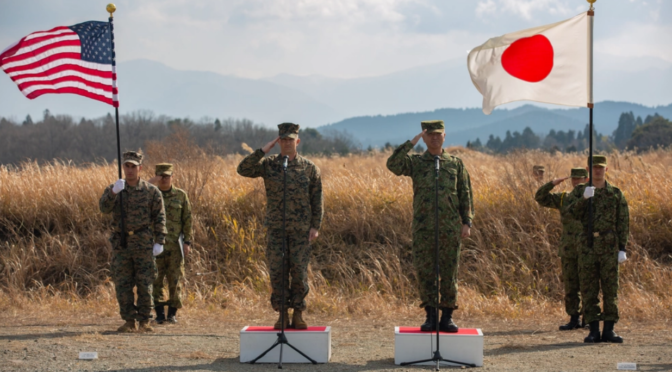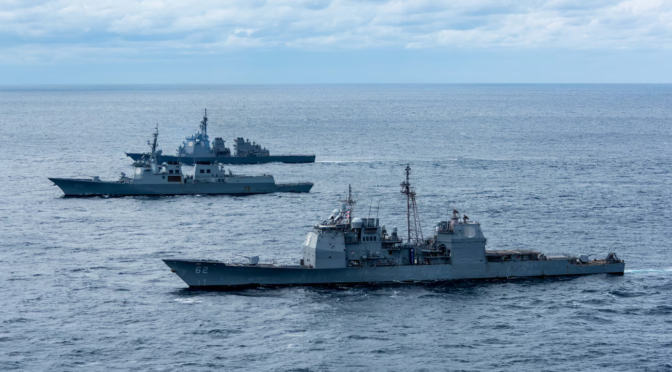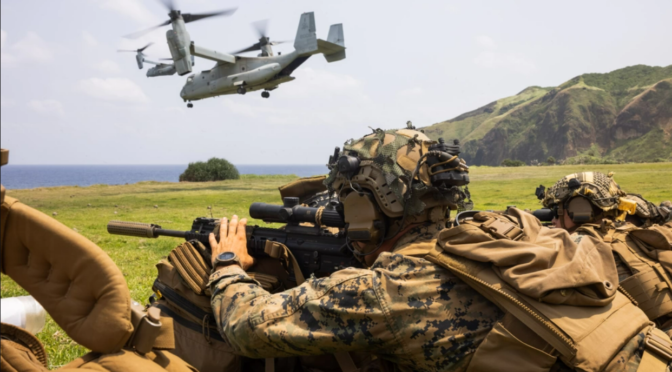Notes to the New Administration Week
By Benjamin Van Horrick
A dire shortage of Asian operation linguists in the First Island Chain hinders the United States’ capability to deter Chinese aggression. The joint force’s campaigns depend on strengthening regional partners and fighting as coalitions. Operational linguists act as interpreters and translators, forge trust, assist with planning, and enable the execution of coalition operations. Since language is culture, linguists also inform and educate the commands about the host nation’s cultural and social nuances, such as those that can affect operational integration. However, the present number of operational linguists in the Pacific is already insufficient for regular peacetime campaigning, let alone for crisis or war. The new administration can fix the problem and add more operational linguists in the Pacific before the operational need becomes a damaging shortfall.
The difficulty of Northeast Asian languages, coupled with the steep learning curve associated with translating for and working with military units, makes recruiting cleared, contracted linguists an urgent operational requirement. As America expanded operations in southern Afghanistan, the shortage of Dari and Pashtun linguists hindered operations. Coupled with the rapid advancement of PRC capabilities and the joint force’s increasing operational tempo in the Pacific, now is ideal for building a deep bench of Asian language linguists. The exercises in Korea, Thailand, Japan, and the Philippines are growing more complex and ambitious. These operations increasingly depend on accurate translations to meet exercise objectives, mitigate risk, and strengthen alliances.
Servicemembers with language skills often do not serve as operational linguists. Most uniformed linguists are crypto-linguists, specialized in listening to conversations and pulling relevant information. Uniformed Regional Area Officers (RAO) and Foreign Area Officers (FAO) possess language skills, but focus on planning with partners. These talented officers and SNCOs can and will support transition and transcription, but the investment the services make in RAOs and FAOs goes far beyond their linguist acumen. Many operational linguists, ones who interpret conversations and translate documents and correspondence between US forces and their partners, are contracted support.
Linguists will serve as an invaluable link in the killchain during wartime. All available assets from across the coalition must be brought to bear to make sense of the environment, prosecute targets, and support maneuver in all forms. Linguists will minimize friction and the fog of war as coalition members shorten the time between sensing and striking a target – no matter what country the capabilities originate from.
During conflict, command centers and coordination cells will link partners in the Pacific as they respond and counter PRC aggression. Unlike the Global War on Terror, the joint force will integrate and accentuate partner capabilities rather than advise and assist. These centers and cells’ detailed coordination and synchronization will rely on linguists to build and maintain shared awareness of the operational environment. Information sharing will allow coalition forces to generate tempo and exploit fleeting opportunities in the battlespace. Commanding and coordinating the fight in the Pacific will require proficiency in multiple difficult languages such as Japanese, Korean, Thai, Tagalog, and Mandarin.
Coalition warfighting is central to the modern U.S. way of war, placing a premium on linguists. During a crisis or war the demand for these critical personnel will only increase. If the joint force leaves the operational need unaddressed, it risks losing mission success in translation.
Major Benjamin Van Horrick is the 3rd Marine Expeditionary Brigade current logistics operations officer.
The views presented are those of the author and do not necessarily reflect the official views or positions of the U.S. Marine Corps and the Department of Defense.
Featured Image: U.S. Marine Corps Col. Robert Brodie, commanding officer of the 31st Marine Expeditionary Unit, and Japan Ground Self-Defense Force Col. Kouki Watanabe, commanding officer of the JGSDF 12th Infantry Regiment, salute the formations of U.S. Marines with Battalion Landing Team 1st Battalion, 5th Marines, 31st MEU, and Japan Ground Self-Defense Force Service Members with the 12th Infantry Regiment, 8th Division, Western Army, during the opening ceremony for Exercise Forest Light Western Army at Camp Oyanohara, Kyushu, Japan, Jan. 18, 2020. (Official Marine Corps photo by Lance Cpl. Ethan M. LeBlanc)





